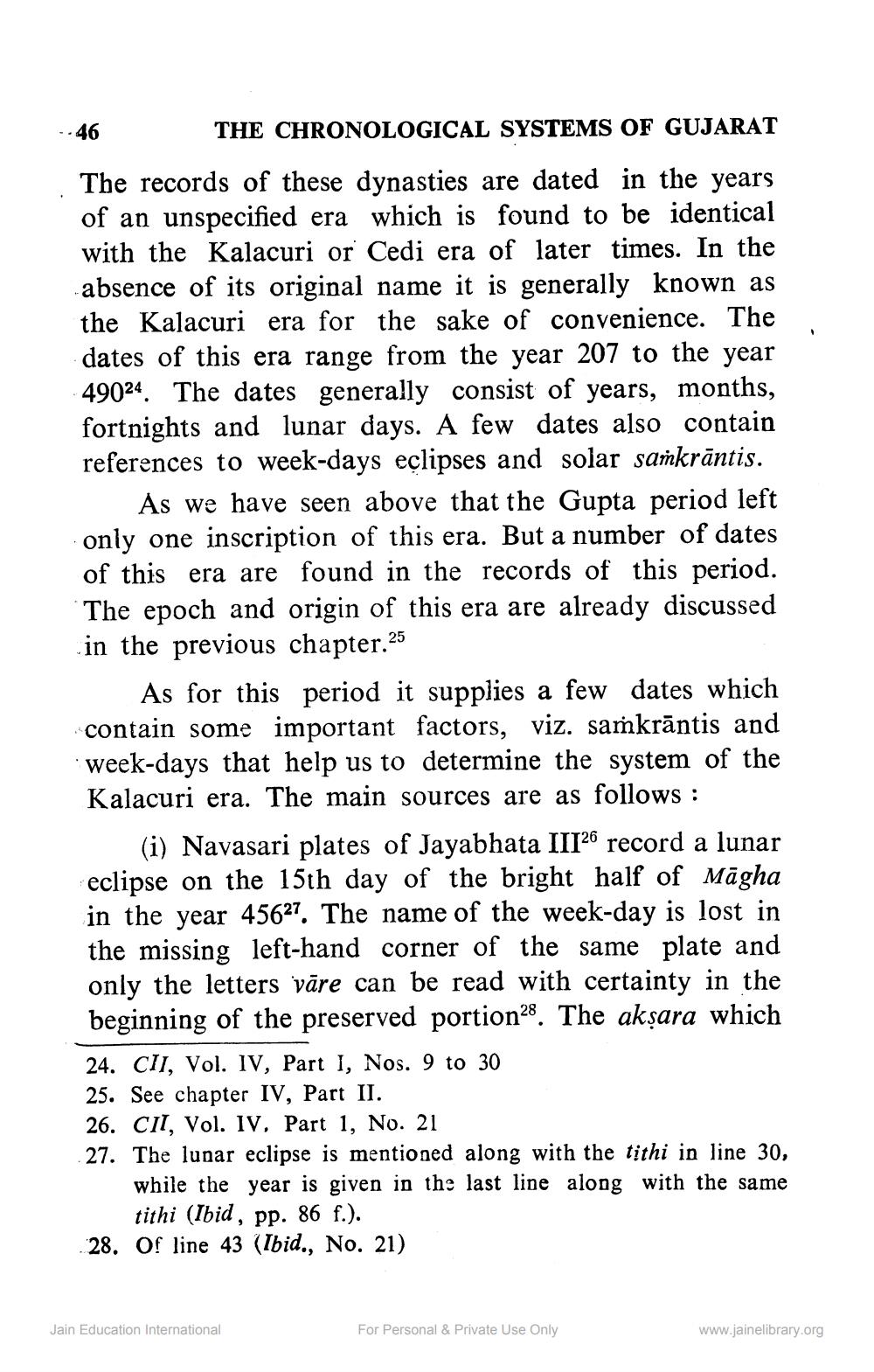________________
--46
THE CHRONOLOGICAL SYSTEMS OF GUJARAT
The records of these dynasties are dated in the years of an unspecified era which is found to be identical with the Kalacuri or Cedi era of later times. In the absence of its original name it is generally known as the Kalacuri era for the sake of convenience. The dates of this era range from the year 207 to the year 49024. The dates generally consist of years, months, fortnights and lunar days. A few dates also contain references to week-days eclipses and solar samkrāntis.
As we have seen above that the Gupta period left only one inscription of this era. But a number of dates of this era are found in the records of this period. The epoch and origin of this era are already discussed in the previous chapter.25
As for this period it supplies a few dates which contain some important factors, viz. samkrāntis and week-days that help us to determine the system of the Kalacuri era. The main sources are as follows :
(i) Navasari plates of Jayabhata III26 record a lunar eclipse on the 15th day of the bright half of Māgha in the year 45627. The name of the week-day is lost in the missing left-hand corner of the same plate and only the letters vāre can be read with certainty in the beginning of the preserved portion28. The akşara which 24. CII, Vol. IV, Part I, Nos. 9 to 30 25. See chapter IV, Part II. 26. CII, Vol. IV, Part 1, No. 21 27. The lunar eclipse is mentioned along with the tithi in line 30,
while the year is given in the last line along with the same
tithi (Ibid, pp. 86 f.). 28. Op line 43 (Ibid., No. 21)
Jain Education International
For Personal & Private Use Only
www.jainelibrary.org




